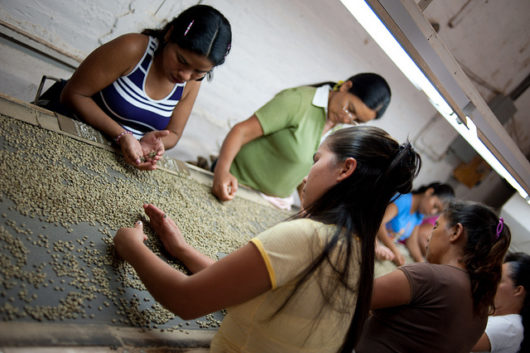Top 10 Facts About Girls’ Education in El Salvador

In the 1980s, El Salvador was involved in conflict associated with protests, kidnapping and gang violence.
During this time, children in El Salvador faced hardships such as the lack of secondary education, limited job opportunities and early pregnancy.
The education sector was affected by the conflicts happening in the country. Military combat led to the destruction of some schools which prevented children from attending their classes. Today, education has improved and El Salvador has gained support from many beneficial programs.
Issues still remain and need to be improved, and one of the most important ones is supporting education equality between male and female students. In the article below, top 10 facts about girls’ education in El Salvador and the differentiation in education between the genders in the country are presented.
Top 10 Facts About Girls’ Education in El Salvador
- Due to the culture in the country that as implies the El Salvadorian women running the household while the men bring in income, girls usually spend a lesser amount of time in school compared to boys. Boys spend around 4.6 years in school while girls only spend around 3.4 years. Many girls are forced to end their education prematurely in order to help with duties at home.
- Gang violence, abuse and the threats made towards girls while being in school make it difficult for them to maintain an education. In 2015, 30 schools reported the act of sexual violence or misconduct towards the girls in school. It is nearly impossible for a girl in El Salvador to gain justice when many of the cases are not reported, and does that are, are rarely investigated.
- Girls as young as 12 are pressured to start a family. Having to maintain so much responsibility leads to education exclusion for females while males continue education. Logically, boys have a better chance at pursuing a career due to the advantage of staying in school longer.
- Based on statistics in Santa Catarina Masahuat, 92 percent of children complete primary education. Out of this number, 98 percent are boys and 86 percent are girls. Statistics at a national level, estimated by the UNESCO Institute for Statistics, showed that the gross enrollment ratio for females who attended secondary school stood at 74.24 percent in 2016. In comparison, enrollment in 1970 was 19.64 percent. The gross enrollment ratio in 2016 was, however, higher for men than women.
- In 2015, El Salvador’s literacy rate was estimated to be about 88 percent. The literacy rate for men was around 90 percent and for women was 86.2 percent. These statistics include people aged 15 and above.
- Marriage is illegal in El Salvador if you are under the age of 18, however, Article 14 of the nations family code made underage marriage possible under certain circumstances. These circumstances allowed for a girl to be forced into marriage if she was pregnant at 13 with no consent required.
- UNICEF El Salvador continues to advocate for children’s rights. In 2017, the Legislative Assembly voted to prohibit child marriage. By doing so, the country office used social media and the U-report platform to inform the public about sexual violence and early child marriage of the young girls. A survey was issued to ask for opinions on how to eradicate child marriage. About 70 percent of the U-report survey takers claimed that they know a young girl either married, pregnant or already a parent.
- Parliament of El Salvador closed the loophole in the child marriage law in August 2017. This is a huge step towards enabling the rights for girls education in El Salvador. This gives them hope they need to continue their future in education. Carmen Elena Aleman, Country Director for Plan International in El Salvador, stated that there is still much to do and that it will take time to change the practices and beliefs that are so deeply entrenched within the society. The responsible people must redouble their efforts to raise awareness of the damage this practice does to girls’ lives in the communities.
- According to UNICEF, education for girls is extremely important and has a multiplier effect. Girls that receive education are more likely to marry later and conceive fewer children which benefits their health and their education. These girls will then grow up with better social and work skills that will enable them better lives.
- UNICEF supports gender equality and has set the Gender Action Plan (GAP). This plan empowers young girls who were at risk of child marriage or who are already married by building support networks and providing them with life skills. Strategies are created to prevent violence and discrimination against girls and boys in school or in general. GAP is the roadmap to gender equality and opportunities in El Salvador but worldwide as well.
Girls’ education in El Salvador is a lot different than boys education in the country, considering the facts listed above. Although education has improved for girls, there are still changes that need to be made.
With the support of programs like GAP and organizations like UNICEF, hope is given to young girls in continuing on with an education and a healthier lifestyle. Plans like this one create a stepping stool to gender equality and poverty eradication.
– Kathleen Smith
Photo: Flickr
